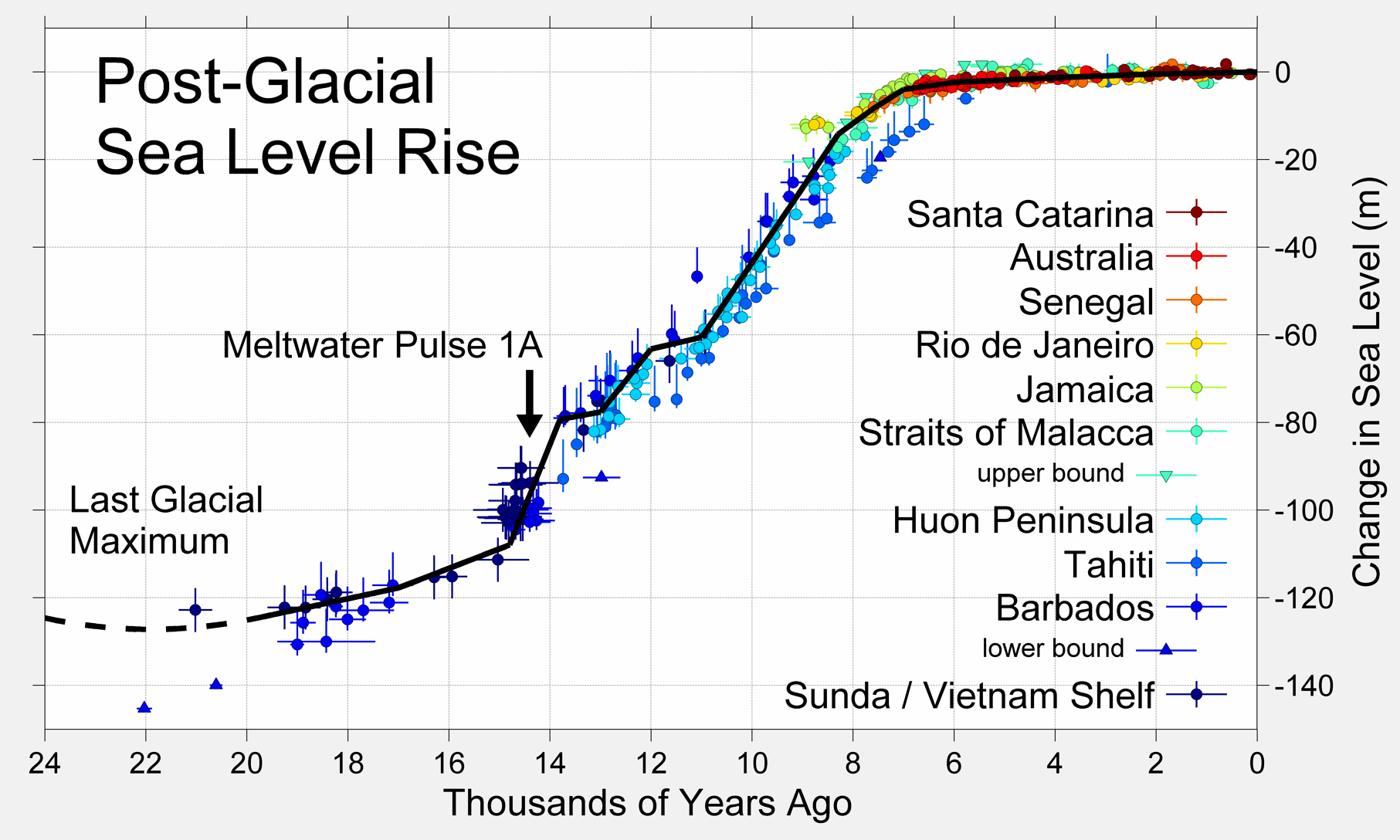Further, in a prior paper by the same authors and using the same data, the authors state that today's sea levels are well within the levels expected from natural variability and that natural variability alone could account for 25 meters more sea level rise than the present:
"Regardless of the uncertainties surrounding the use of any one of the specific scenarios in Fig. 2, it is clear that equilibrium sea level for the present-day [CO2] of 387 ppmv resides within a broad range between 0 and +25 (±5) meters."and show sea levels during at least 4 prior interglacials over the past 500,000 years were higher than during the present interglacial period [up to 31 feet higher during the last interglacial alone]. Thus, there is no evidence that the [decelerating] sea level rise over the past ~20,000 years is unusual, unprecedented, or unnatural.
Study finds global sea levels rose up to five meters per century at the end of the last five ice age cycles

Land-ice decay at the end of the last five ice-ages caused global sea-levels to rise at rates of up to 5.5 metres per century, according to a new study. [5.5 meters/century is 31 times faster than current sea level rise]
An international team of researchers developed a 500,000-year record of sea-level variability, to provide the first account of how quickly sea-level changed during the last five ice-age cycles.
The results, published in the latest issue of Nature Communications, also found that more than 100 smaller events of sea-level rise took place in between the five major events.
Dr Katharine Grant, from the Australian National University (ANU), Canberra, who led the study, says: "The really fast rates of sea-level rise typically seem to have happened at the end of periods with exceptionally large ice sheets, when there was two or more times more ice on the Earth than today.
"Time periods with less than twice the modern global ice volume show almost no indications of sea-level rise faster than about 2 metres per century. Those with close to the modern amount of ice on Earth, show rates of up to 1 to 1.5 metres per century."
Co-author Professor Eelco Rohling, of both the University of Southampton and ANU, explains that the study also sheds light on the timescales of change. He says: "For the first time, we have data from a sufficiently large set of events to systematically study the timescale over which ice-sheet responses developed from initial change to maximum retreat."
"This happened within 400 years for 68 per cent of all 120 cases considered, and within 1100 years for 95 per cent. In other words, once triggered, ice-sheet reduction (and therefore sea-level rise) kept accelerating relentlessly over periods of many centuries."
Professor Rohling speculates that there may be an important lesson for our future: "Man-made warming spans 150 years already [No - according to the IPCC, there was no significant man-made warming prior to 1950] and studies have documented clear increases in mass-loss from the Antarctic and Greenland ice sheets. Once under way, this response may be irreversible for many centuries to come."
The team reconstructed sea-levels using data from sediment cores from the Red Sea, an area that is very sensitive to sea-level changes because it's only natural connection with the open (Indian) ocean is through the very shallow (137 metre) Bab-el-Mandab Strait. These sediment samples record wind-blown dust variations, which the team linked to a well-dated climate record from Chinese stalagmites. Due to a common process, both dust and stalagmite records show a pronounced change at the end of each ice age, which allowed the team to date the sea-level record in detail.
The researchers emphasise that their values for sea-level change are 500-year averages, so brief pulses of faster change cannot be excluded.
More information: "Sea-level variability over five glacial cycles" Nature Communications, DOI: 10.1038/ncomm6076
___________________________________________



There is a problem with the link:
ReplyDeleteNature Communications, DOI: 10.1038/ncomm6076
PS: Thanks for this marvellous resource.
This comment has been removed by the author.
ReplyDelete